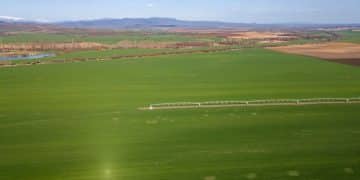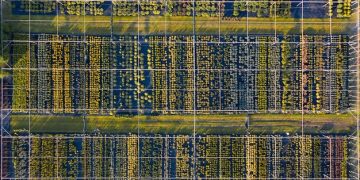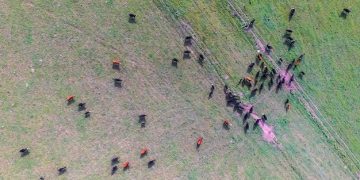AI-driven crop health monitoring: optimize your yield
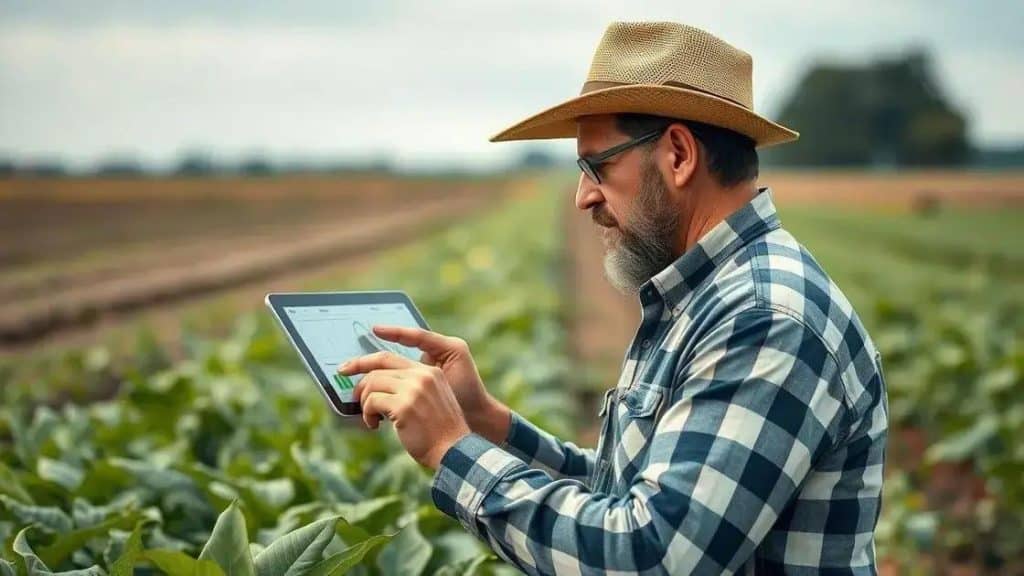
AI-driven crop health monitoring enhances agricultural efficiency by utilizing data analytics and advanced technologies to optimize crop yield, resource management, and sustainability in farming practices.
AI-driven crop health monitoring is changing the way farmers approach agriculture. Imagine having the ability to detect plant diseases early and optimize water usage with just a few clicks. Curious how this works? Let’s dive in.
Understanding AI-driven crop health monitoring
Understanding AI-driven crop health monitoring helps farmers make better decisions for their crops. By leveraging modern technology, farmers can monitor their fields in real time and adjust their practices accordingly.
This innovative solution utilizes data from various sources, such as satellite imagery and drones, to assess the condition of crops accurately. As a result, farmers gain valuable insights that lead to healthier plants and higher yields.
Key components of AI-driven monitoring
AI-driven crop health monitoring relies on several essential components:
- Remote sensing technologies
- Data analytics and machine learning
- IoT devices for real-time data collection
- User-friendly applications for farmers
These technologies work seamlessly together, providing a comprehensive overview of crop health. For instance, satellite imagery captures high-resolution images of fields, while IoT sensors collect data on soil moisture and temperature.
Moreover, the integration of machine learning allows for predictive analytics, helping farmers anticipate problems before they become serious. This proactive approach not only saves time but also reduces resource waste.
Benefits of using AI-driven crop health monitoring
Adopting this technology offers several benefits:
- Increased efficiency in crop management
- Early detection of diseases and pests
- Improved resource allocation, such as water and fertilizers
- Enhanced decision-making based on data-driven insights
By understanding the advantages, farmers can appreciate how vital this technology is for modern agriculture. With continuous advancements in AI, the future looks promising.
This system empowers farmers to maintain a healthy ecosystem while achieving their production goals. As a result, embracing AI-driven crop health monitoring is no longer optional—it’s necessary for success in today’s agricultural landscape.
Key benefits of AI in agriculture
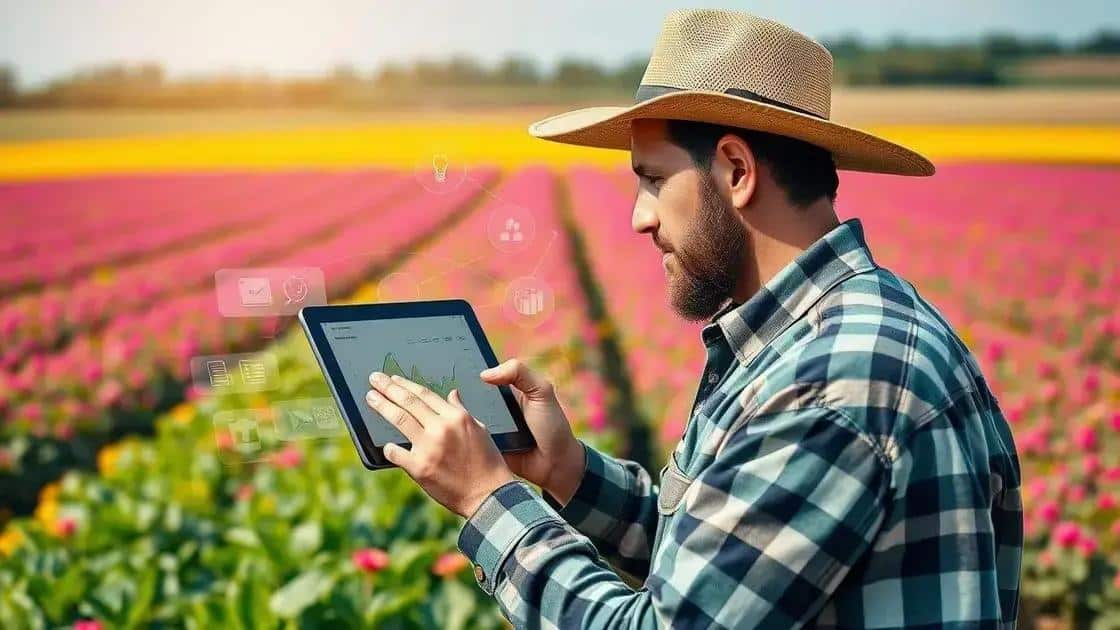
Key benefits of AI in agriculture highlight how technology transforms farming practices. By integrating artificial intelligence, farmers can achieve remarkable results that improve productivity and sustainability.
AI helps in analyzing massive amounts of data from various sources. This information enables farmers to make informed decisions quickly. When AI technologies are applied, the outcomes become more efficient and effective.
Improved crop yields
One of the most significant advantages of using AI is the potential for improved crop yields. AI systems can analyze soil data and weather patterns to determine the best planting times and crop types.
- Predictive analytics for harvest timing
- Customized fertilizer application
- Enhanced pest and disease management
This data-driven approach leads to healthier plants and increased production, helping farmers sustain their businesses.
Additionally, resource optimization is another critical benefit. AI allows for precise management of water usage, fertilizers, and pesticides. This fine-tuning not only saves costs but also conserves natural resources.
Enhanced decision-making
With AI, farmers have access to tools that improve their decision-making capabilities. AI systems can provide real-time feedback and suggestions based on the latest data trends.
- 24/7 monitoring of crop conditions
- Alerts for adverse weather events
- Data visualization tools for easy understanding
This capability allows farmers to respond swiftly to issues, minimizing damage and enhancing overall productivity. Furthermore, AI can help in predicting market trends, enabling better planning for sales and distribution.
Using AI in agriculture also contributes to sustainable practices. By precisely applying inputs and managing resources, farmers can reduce unnecessary environmental impacts. This focus on sustainability is crucial as the world faces increasing pressures on food systems and natural resources.
Implementing AI for effective crop management
Implementing AI for effective crop management is essential in today’s agricultural landscape. As farmers face challenges like climate change and resource scarcity, AI technologies can provide innovative solutions that enhance productivity.
Integrating AI into crop management involves using data and analytics to inform decision-making. This method allows farmers to optimize their practices based on real-time information and past trends.
Steps to implement AI in crop management
There are several key steps to effectively implementing AI:
- Define specific goals for crop management
- Choose the right AI tools and software
- Collect and analyze relevant data
- Train staff on using AI technologies
By following these steps, farmers can create a solid foundation for integrating AI into their operations. Each step is crucial for ensuring that AI tools align with the unique needs of the farming business.
In addition to setting up tools, it is essential to continuously monitor performance. This involves analyzing outputs and making necessary adjustments to improve outcomes. The more data collected, the better the predictions and recommendations become.
Types of AI technologies for crop management
Several types of AI technologies can be utilized:
- Precision agriculture tools for soil analysis
- Drones for aerial crop monitoring
- Machine learning models for yield predictions
- Automated irrigation systems
Using these technologies, farmers can gain insights into their fields. For example, drones can identify areas needing attention, while machine learning can predict future yields based on historical data.
Additionally, integrating AI facilitates better resource management. With precise information, farmers can reduce waste of water and fertilizers. This not only improves efficiency but also supports sustainable farming practices.
The future of farming with AI technology
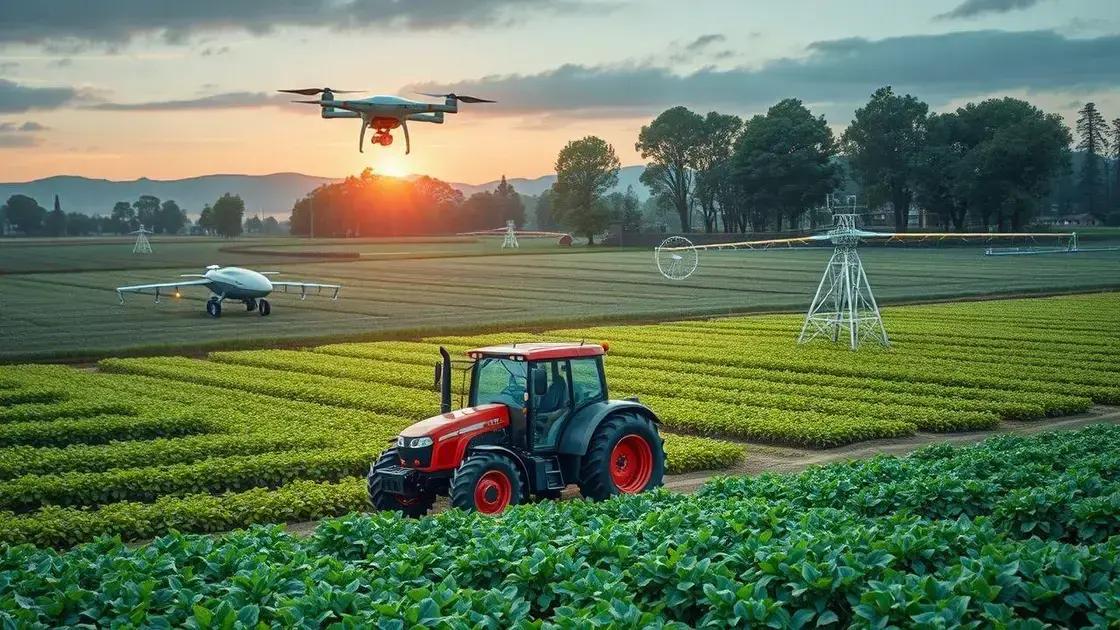
The future of farming with AI technology looks promising as innovations in artificial intelligence continue to transform agricultural practices. Farmers are beginning to rely more on AI to help meet the growing demands for food and sustainability.
As technology evolves, it becomes essential for farmers to adapt to new methods of cultivation. By leveraging AI, they can optimize resources, improve yields, and enhance soil health. This shift towards technology-driven agriculture is vital to ensure food security in the years to come.
Trends in AI technology for agriculture
Several trends are shaping the future of farming:
- Increased use of automation on farms
- Enhanced data analytics for predictive farming
- Integration of autonomous vehicles and drones
- Development of AI-driven irrigation systems
These advancements allow farmers to operate with greater efficiency and effectiveness, minimizing environmental impacts while maximizing output.
For instance, the integration of autonomous vehicles can reduce labor costs and increase precision in planting and harvesting. Drones equipped with sensors can monitor crop health from above, providing real-time data that enhances decision-making.
AI’s role in sustainable agriculture
Sustainability is at the forefront of agricultural development. AI technologies promote sustainable practices by enabling farmers to use fewer resources. For example, AI can optimize water usage through smart irrigation systems that adapt to specific crop needs.
- Predictive analytics minimize pesticide use
- Soil health monitoring preserves biodiversity
- Smart farming techniques reduce carbon footprint
This focus on sustainability not only benefits the environment but also creates economic advantages for farmers. By utilizing AI, they can respond quickly to changes in the market and consumer preferences.
The integration of AI in agriculture is not just about improving efficiency; it’s also about ensuring a resilient food production system for future generations. As technologies advance, farmers will face new opportunities and challenges that will shape the agricultural landscape.
FAQ – Frequently Asked Questions about AI in Agriculture
How does AI improve crop yield?
AI analyzes data on soil, weather, and crop health to provide insights that help farmers make informed decisions about planting and resource allocation.
What are the key benefits of using AI in farming?
Key benefits include increased efficiency, better resource management, early detection of pests and diseases, and sustainable farming practices.
Can small farmers benefit from AI technology?
Yes, AI technologies are increasingly accessible and can help small farmers optimize operations, reduce costs, and improve yields.
What tools are available for AI-driven crop management?
Farmers can use various tools like drones for monitoring, precision irrigation systems, and software for data analysis and predictive analytics.
